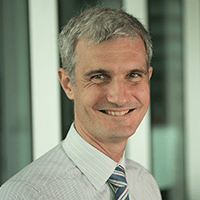What is the advantage of a full plant model?
Better information = better decisions.
A good full plant model improves quality and timeliness of investigations into potential benefits of process improvement scenarios and analysis of performance variations. The ability to rapidly run through any number of scenarios ultimately helps decision making, whether to fine tune the process parameter setting or to decide on the best capital investment.
So why doesn’t everyone have one?
There are several off-the-shelf process modelling platforms such as SysCAD and Aspen. Buying the platform is just the start of the journey. Regardless of platform, significant development and customisation is required to configure and tune a good model to create your virtual refinery. Ongoing updating and tuning is required to ensure the model remains useful.
The skills required for this are specialised. A process engineer with experience in alumina refining and expertise in simulation software is just the thing. Refinery owners frequently struggle to attract, develop and retain the skill base required.
Where do I get one?
Invest the time to recruit and develop suitable people for the work, and ensure you buy a good modelling package. SysCAD is most the commonly used in the alumina industry. Invest in development of the model. Ensure redundancy within the organisation to ensure smooth transitions when staff movements occur. Alternatively, seek assistance from technical service providers, such as Advisian, who can help develop and maintain your virtual refinery on your behalf.
In summary - always use the right tool for the job
We have seen time and again the value of a good plant process model. Whether it helps to tweak that last bit of efficiency out of the refinery, avoid otherwise unforeseen secondary effects or guide you to the best investment decisions, a virtual refinery is an essential tool.


